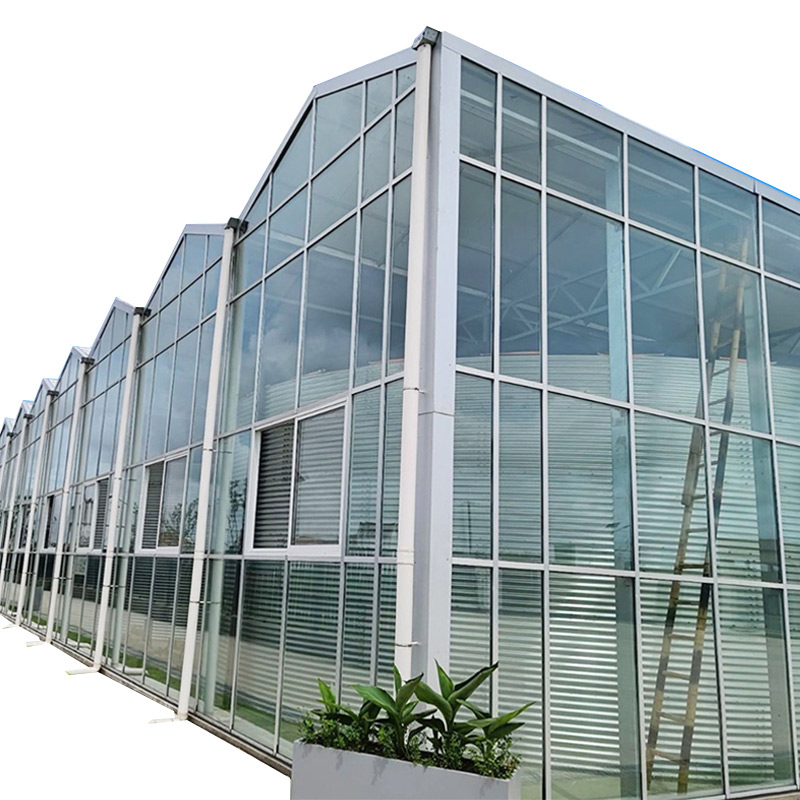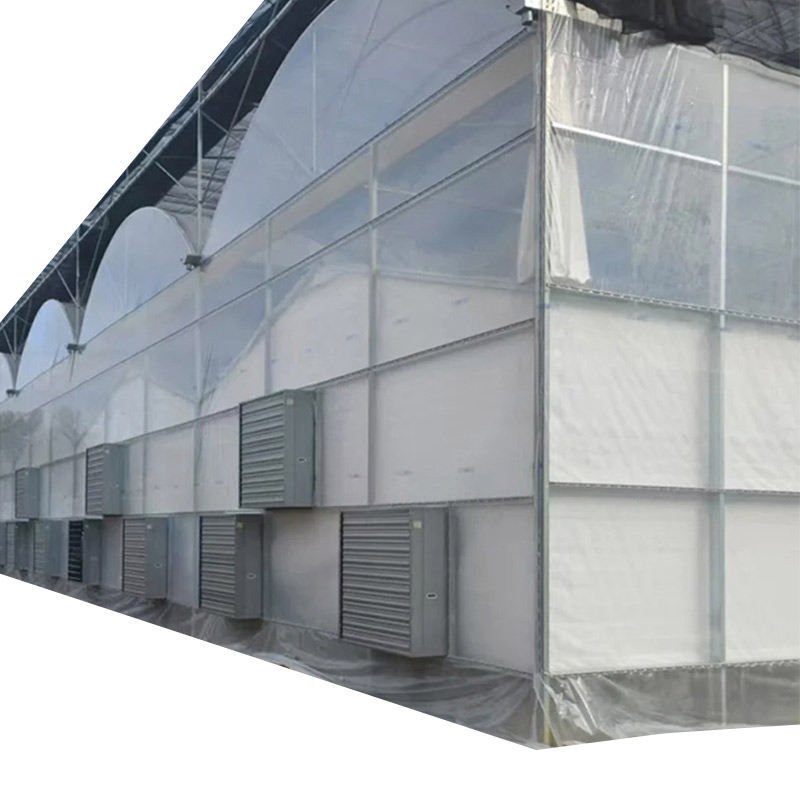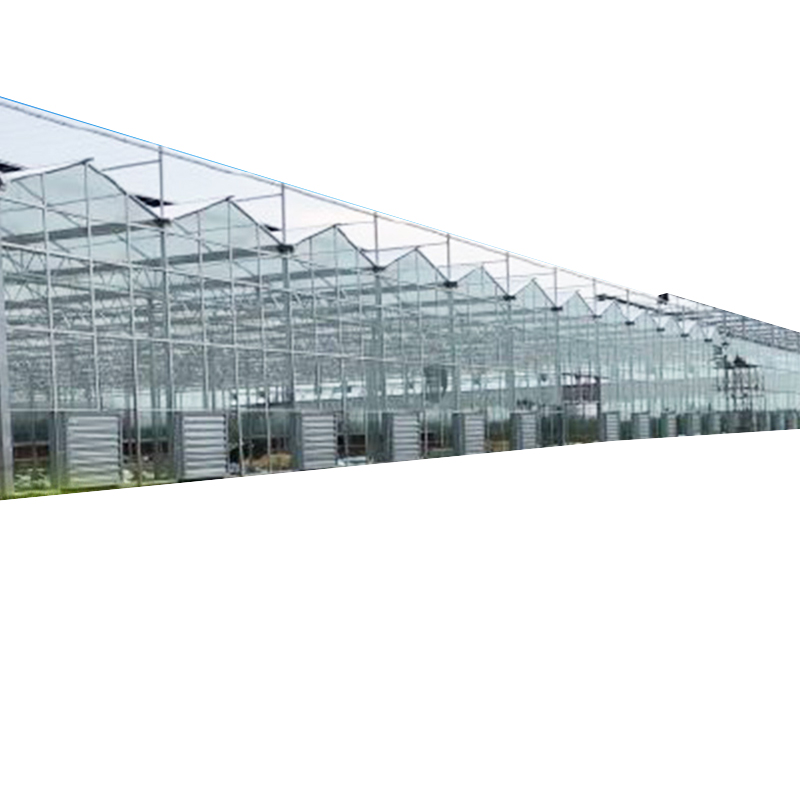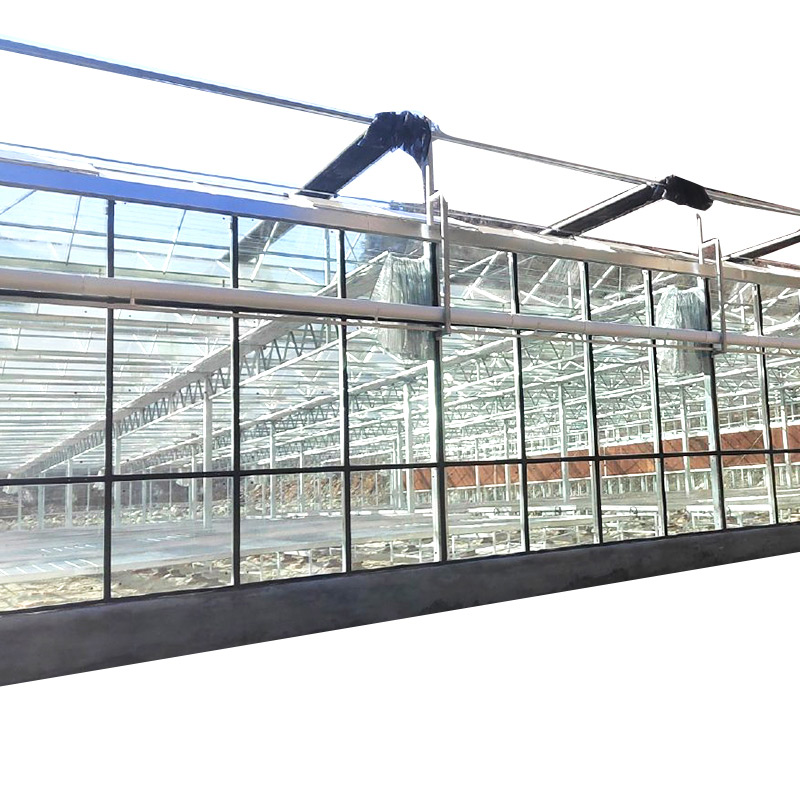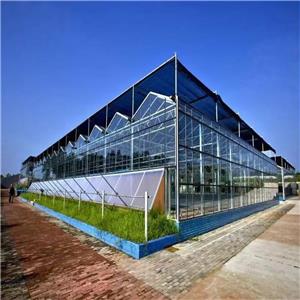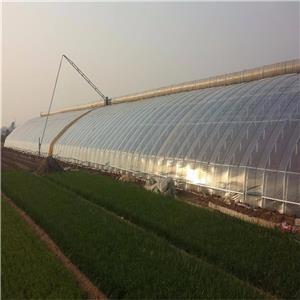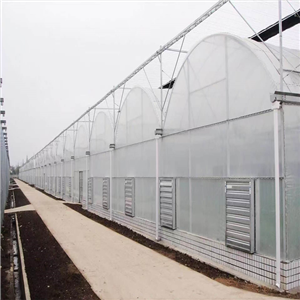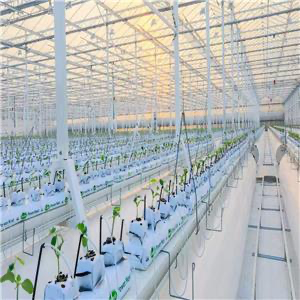
Compact Polycarbonate Greenhouse is Ideal for urban gardens and hobbyists, this small greenhouse features 4mm twin-wall polycarbonate panels offering: 85% light transmission with UV protection,R1.7 insulation for season extension, Durable aluminum frame (5'x8' to 8'x12' sizes), Easy assembly with sliding door access.Multi-Span Polycarbonate Greenhouse, ecological polycarbonate plate greenhouse and seeding rasing polycarbonate plate greenhouse are designed for commercial growers, this high-capacity greenhouse features connected arched bays with 8-16mm multi-wall polycarbonate panels delivering: 90% light transmission with anti-condensation layers, Ultra-efficient climate control (integrated ventilation/heating channels), Industrial-strength frame (snow load 40kg/m², wind resistance 120km/h).
Small Seeding Rasing Muti-span Polycarbonate Greenhouse
1. Introduction to small polycarbonate greenhouse,multi-span polycarbonate greenhouse,seeding rasing polycarbonate plate greenhouse and ecological polycarbonate plate greenhouse
Small seedling raising demands precision-controlled environments where temperature stability, uniform light distribution, and humidity control are critical. Multi-span polycarbonate greenhouses provide the ideal solution by combining:
✔ Microclimate zones for different growth stages
✔ Energy-efficient insulation (R-values up to 2.5)
✔ Modular scalability from 500m² to 5,000m²
✔ 98%+ germination rates under optimized conditions
These structures are revolutionizing commercial nurseries, vegetable transplant production, and reforestation programs worldwide.
2. Why Polycarbonate for small polycarbonate greenhouse,multi-span polycarbonate greenhouse,seeding rasing polycarbonate plate greenhouse and ecological polycarbonate plate greenhouse?
Material Advantages:
| Property | Benefit for Seedlings |
|---|---|
| 90% light transmission | Prevents leggy growth |
| UV protection | Reduces transplant shock |
| Diffused light | Eliminates leaf burn |
| Condensation control | Prevents damping-off disease |
Comparative Performance ofsmall polycarbonate greenhouse,multi-span polycarbonate greenhouse,seeding rasing polycarbonate plate greenhouse and ecological polycarbonate plate greenhouse
| Material | Light Diffusion | Insulation (R-value) | Durability |
|---|---|---|---|
| Polycarbonate | Excellent (20-30% haze) | 1.7-2.5 | 15-20 years |
| Glass | Poor (0% haze) | 0.9 | Fragile |
| Polyethylene | Good (40% haze) | 0.7 | 2-3 years |
3. Multi-Span Structural Advantages
Key Features:
Gutter-connected design maximizes space (85% usable area vs 70% in single-span)
Column-free interiors for flexible benching layouts
Snow load capacity up to 45kg/m² (triple-wall panels)
Wind resistance to 130km/h
Span Configurations:
| Span Width | Recommended Use |
|---|---|
| 3.2m | Compact seedling trays |
| 4.0m | Mechanized transplant lines |
| 5.0m | Tall propagation stock |
4. Light Transmission Optimization
Ideal PAR Levels:
Germination: 100-200 μmol/m²/s
Early growth: 200-400 μmol/m²/s
Hardening-off: 400-600 μmol/m²/s
Panel Selection Guide:
| Panel Type | Light Transmission | Best Growth Stage |
|---|---|---|
| 4mm twin-wall | 88% | Germination |
| 6mm triple-wall | 86% | Vegetative growth |
| 10mm X-structure | 84% | Cold climate hardening |
5. Climate Control Systems of small polycarbonate greenhouse
Temperature Management:
Heating: Under-bench hot water pipes (40°C max)
Cooling: Pad-and-fan systems (Δ5°C achievable)
Thermal screens: Energy savings up to 60%
Humidity Control:
Fogging systems maintain 70-85% RH
Dehumidifiers prevent fungal outbreaks
6. Ventilation Design of small polycarbonate greenhouse
Roof vents (20% of floor area)
Sidewall louvers with insect screens
Continuous ridge ventilation
7. Irrigation Technology of small polycarbonate greenhouse
| System Type | Application |
|---|---|
| Overhead misting | Germination |
| Boom irrigation | Young seedlings |
| Ebb-and-flow | Plug trays |
8. Heating Solutions
Biomass boilers (most economical)
Heat pumps (precise ±0.5°C control)
Solar thermal storage
9. Space Optimization
Benching Layouts:
Rolling benches (90% space utilization)
Multi-tier systems (3x capacity)
Mobile tray carts
10. Disease Prevention
Positive pressure ventilation
Copper-infused polycarbonate
UV-C sterilization zones
11. Automation Features
Climate computers with crop algorithms
IoT soil moisture sensors
Automatic shade adjustment
12. Energy Efficiency
Insulation: R-2.5 panels reduce heat loss
LED supplementation: 50% less power than HPS
Heat recovery ventilators
13. Crop-Specific Adaptations
Vegetable Plugs:
Day/night ΔT <5°C
16h photoperiod
Forestry Seedlings:
Far-red light for stem thickening
Wind simulation systems
14. Construction Details
Foundation: Ground screws (no concrete)
Glazing: Thermal-break gaskets
Snow load: Reinforced purlins
15. Operational Protocols
Daily: Check misting nozzles
Weekly: Disinfect surfaces
Monthly: Calibrate sensors
16. Cost Analysis
| Size | Cost/m² | ROI Period |
|---|---|---|
| 500m² | $85 | 2.8 years |
| 1,000m² | $72 | 2.1 years |
| 2,000m² | $65 | 1.7 years |
17. Case Studies
Dutch Tomato Nursery:
1.2ha multi-span
15M seedlings/year
30% energy savings
18. Maintenance
Annual: Panel optical testing
5-year: Structure realignment
19. Future Tech
Self-cleaning nanocoatings
AI disease prediction
20. Troubleshooting
Issue: Uneven growth
Solution: Adjust light diffusion
21. FAQs
Q: Minimum height for seedlings?
A: 3.5m for air stratification
22. Conclusion
Multi-span polycarbonate greenhouses provide the perfect controlled environment for high-value seedling production with unmatched efficiency and yield consistency.



